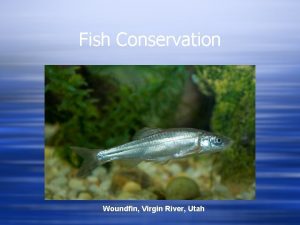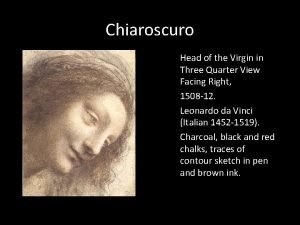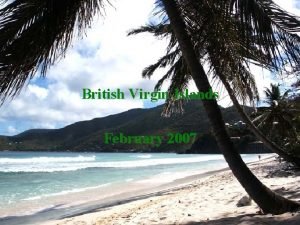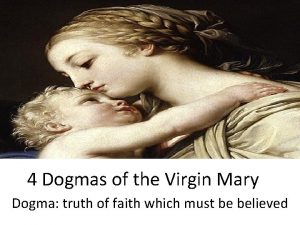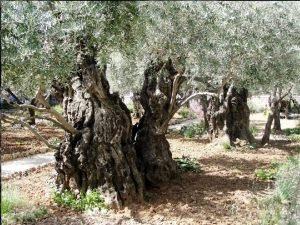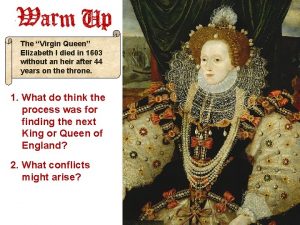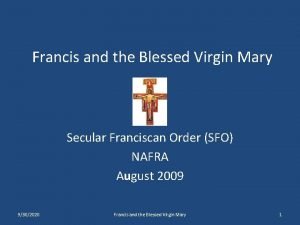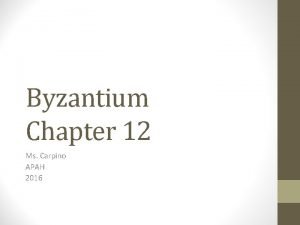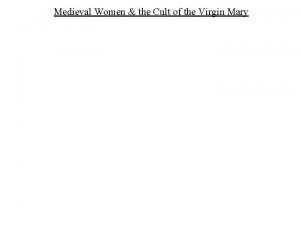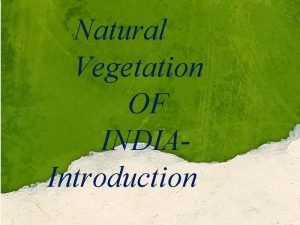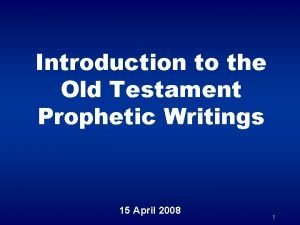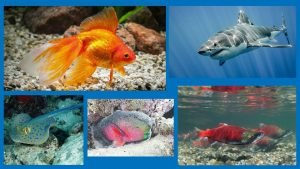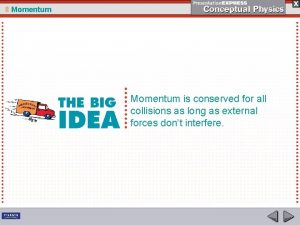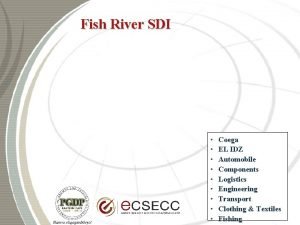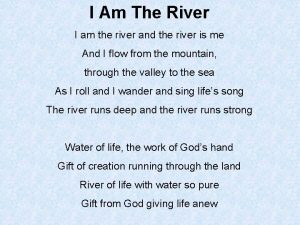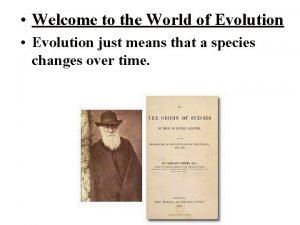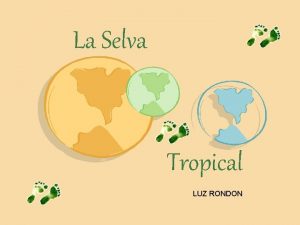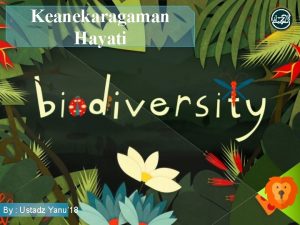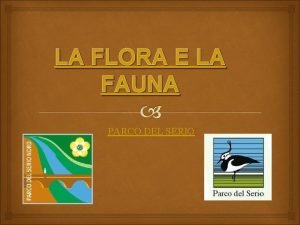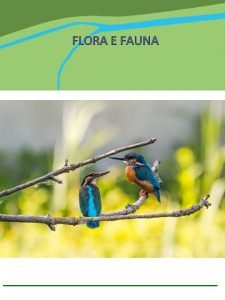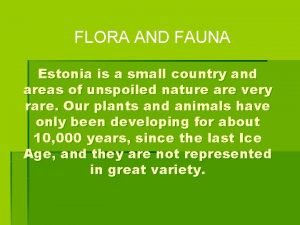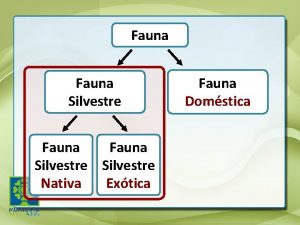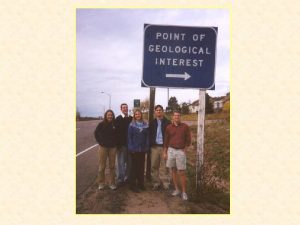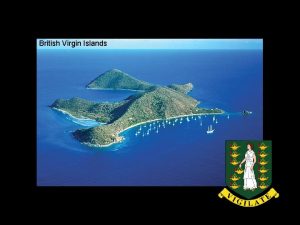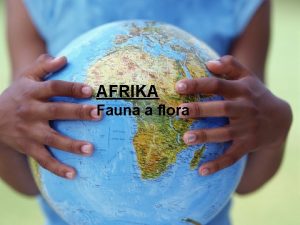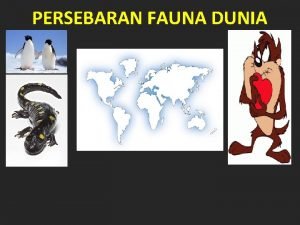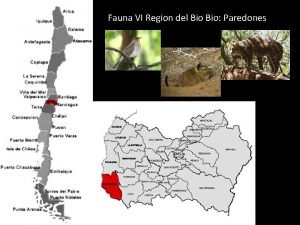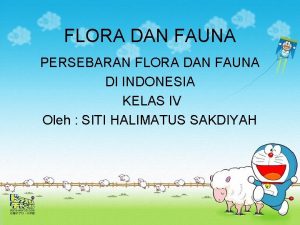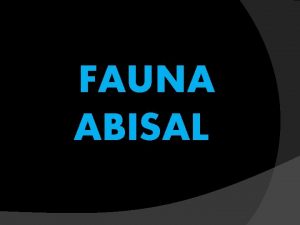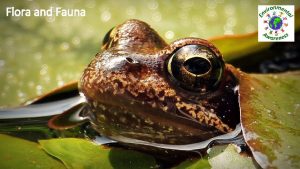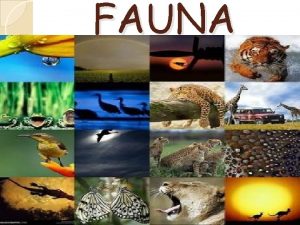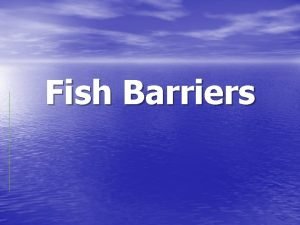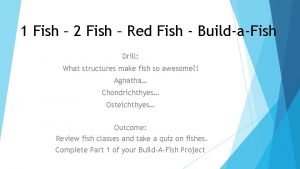Fish Conservation Woundfin Virgin River Utah Changing Fauna








































- Slides: 40

Fish Conservation Woundfin, Virgin River, Utah

Changing Fauna w Extinction of endemic species w Fisheries are collapsing w Heavier reliance on aquaculture

Changing Fauna w Expanding human population w Exploiting fish at unsustainable rates w Competing for water, space, food

Original Fish Diversity w 31, 500 species worldwide w 58% marine w 41% freshwater w ~1% diadromous

Imperiled Species w 5% of marine species w 20 -40% of freshwater species w Humans confiscate water w Pollute water we do not use

Imperiled Species w Fish most likely to be endangered in regions with: w w w Highly developed economies Small, isolated bodies of water High endemism Arid or Mediterranean climates Big rivers Big lakes

Southwestern U. S. w Colorado river + isolated springs, small creeks w Arid climate w Many endemic pupfishes, minnows, suckers w La Vegas with possibly world’s highest percapita water consumption rate

North America w 1/3 of region’s fish taxa either extinct or in need of protection w Most species in danger in southern, southwestern areas

Historical Abundance w Captain John Smith describing tributaries of the Chesapeake in 1608: w “… in diverse places that abundance of fish lying so thicke with their heads above the water, as for want of nets we attempted to catch them with a frying pan, but we found it a bad instrument to catch fish with. Neither better fish more plenty or variety had any of us ever seene, in any place swimming in the water than in the Bay of the Chesapeack, but there not to be caught with frying pans. ”

Historical Abundance w Captain John Smith again: Having grounded on an oyster bed in the Potomac as the tide was going out “…we spied many fishes lurking amongst the weeds on the sands, our captaine sporting himself to catch them by nailing them to the ground with his sword, set us all a fishing in that manner, by this devise, we tooke more in an houre than we all could eat. ”

Historical Abundance w Clearly, a different level of fish abundance than we encounter today. w Similarly abundant numbers of fish were described in the waters off New England eastern Canada.

The Grand Banks Fishery w John Cabot 1497: w “… the sea there is swarming with fish, which can be taken not only with the net, but in baskets let down with a stone, so that it sinks in the water. ”

Grand Banks/Georges Bank

The Grand Banks Fishery w The rich fishing grounds off the northeastern U. S. and eastern Canada result from a combination of factors: w The various banks are deposits of moraine left there by glaciers. w The water above them is relatively shallow (60 -300 feet in most places). w They occur at the confluence of the cold nutrient rich northern Labrador current and the warm southern Gulf Stream. w The mixing of these currents combines warmth and nutrients to produce massive blooms of plankton that supported huge schools of mackerel and herring that in turn support cod and other predators.

Atlantic cod!!

The Grand Banks Fishery w In 1992, the Canadian Government placed a two-year moratorium on cod fishing, which was extended indefinitely and remains in place today. In 2003, the two main populations of Atlantic cod were added to Canada’s endangered species list. w In U. S. waters, cod populations have similarly plummeted. w What happened? Industrial fishing happened.

The Grand Banks Fishery w From fishing almost exclusively by schooners from a few countries….

The Grand Banks Fishery w To factory ships from many nations

The Grand Banks Fishery

The Grand Banks Fishery w Estimates of the size of the original population suggest that there were about 7 million metric tons of cod off the Atlantic coast of Canada in 1505. w By 1992 the estimate was 22, 000 metric tons (<1/3 of 1% of the original population. ).

The Grand Banks Fishery w Cod stocks are showing signs of recovery. In 2010 cod stocks in the Grand Banks were estimated to have increased 69% since 2007. w However, that level is still only about 10% of 1960’s levels.

The Grand Banks Fishery w Why is fish stock recovery so slow? w Habitat transformation almost certainly has played a major role.

The Grand Banks Habitat w Before trawling, the sea bottom on the banks was not a layer of mud. Rocks outcrops, boulders and stones provided structure, places for young fish to hide and rich communities of sponges, crabs, mussels, anemones, tube worms and other invertebrates flourished.

The Grand Banks Habitat w A bottom trawler’s net is held open by large metal doors weighing thousands of pounds and the bottom of the bag is kept on the seabed by a weighted metal cable. Each pass of a net drags boulders and rocks, buries and crushes invertebrates and leaves behind a virtual moonscape. w Bottom trawling is the ecological equivalent of clear -cutting, but carried out on a much more massive scale and out of view.

Bycatch w Under-sized or nontarget portion of catch w Can be up to 90% of total catch in some fisheries w Averages 1/3 of all fisheries w All dies

Bycatch w Under-sized fish (juveniles) of target species represent failure to recruit w Additional nonnatural mortality factor that further suppresses population growth

Changed Communities w Cod, haddock, flounders harvested from Grand Banks replaced by sharks, skates w Also changes in zooplankton, benthos, other unexploted species

Alien Species Threats w w Predation Competition Disease/Parasites Hybridization

Predation w Nile perch devoured ~200 species of cichlids into extinction in Africa’s Lake Victoria

Competition w Alewife competed with Great Lakes whitefishes (Coregonus spp. ) for limited plankton resources

Disease/Parasites w Re shiner invasion in Utah’s Virgin River brought tapeworm that decimated native woundfin Woundfin stocking, 2011

Hybridization w Rainbow trout X cutthroat trout w Cutbow w Hybrid vigor (rapid growth, large size), but loss of genetics

Biotic Homogenization w Both regional and worldwide scales w Losing natural distinctiveness

Minnesota Lakes w Warmwater, coolwater, coldwater w Walleye everywhere

Worldwide Homogenization w Temperate lakes and reservoirs: w w w Common carp Largemouth bass Sunfish Mosquitofish Northern pike Catfish

Worldwide Homogenization w Coldwater streams: w Rainbow trout w Brown trout

Aquaculture w Meet demands of growing human population w Take pressure off wild fish populations w Problems: food requirements, escapements, more

Aquaculture w Atlantic salmon: penreared in bays, estuaries w Food of fish meal, fish oil (3 lbs. ocean fish = 1 lb. salmon) w Wastes, antibiotics w Escapements in the millions w Transport

Public Sentiment

Conservation Strategies w Ecosystem-based management w Protecting biotic diversity (including genetic) w Creating large-scale marine reserves w Eliminate alien invasions w Eliminate government subsidies of nonsustainable practices (logging, mining, etc. )
 Virgin river utah fishing
Virgin river utah fishing One fish two fish red fish blue fish ride
One fish two fish red fish blue fish ride One fish two fish blowfish blue fish script
One fish two fish blowfish blue fish script Interoparous
Interoparous The head of the virgin in three-quarter view facing right
The head of the virgin in three-quarter view facing right 877-750-4748
877-750-4748 Virgin mobile smsc
Virgin mobile smsc Seattle to virgin islands
Seattle to virgin islands Isaac newton
Isaac newton The 4 dogmas of mary
The 4 dogmas of mary Litany of the blessed virgin mary ppt
Litany of the blessed virgin mary ppt Sveta ana tomb of the virgin, jeruzalem
Sveta ana tomb of the virgin, jeruzalem Virgin queen rules
Virgin queen rules Virgin mary family tree
Virgin mary family tree Unit 22 aviation
Unit 22 aviation Isaiah cried behold a virgin lyrics
Isaiah cried behold a virgin lyrics What is mean by virgin
What is mean by virgin Jose rizal love life
Jose rizal love life Saint apollinaris amid sheep
Saint apollinaris amid sheep Virgin and child in majesty
Virgin and child in majesty What is natural vegetation
What is natural vegetation The girlhood of mary virgin
The girlhood of mary virgin Virgin medoia
Virgin medoia Fish reproductive system
Fish reproductive system Bony vs cartilaginous fish
Bony vs cartilaginous fish A big fish swims up and swallows a small fish at rest
A big fish swims up and swallows a small fish at rest Are cut evenly from large slabs of frozen fillet
Are cut evenly from large slabs of frozen fillet The leaves are little yellow fish swimming in the river
The leaves are little yellow fish swimming in the river Riversdi
Riversdi I am the river and the river is me
I am the river and the river is me Green river (duwamish river tributary)
Green river (duwamish river tributary) Fauna foundation
Fauna foundation Selva pluvial mesotérmica o selva nublada
Selva pluvial mesotérmica o selva nublada Fauna fontcuberta
Fauna fontcuberta Peta persebaran flora dan fauna
Peta persebaran flora dan fauna Fauna tipe asiatis
Fauna tipe asiatis Flora e fauna del fiume serio
Flora e fauna del fiume serio Flora ir fauna
Flora ir fauna Ecosistema del fiume
Ecosistema del fiume Plora dan pauna dunia
Plora dan pauna dunia Australská savana
Australská savana
